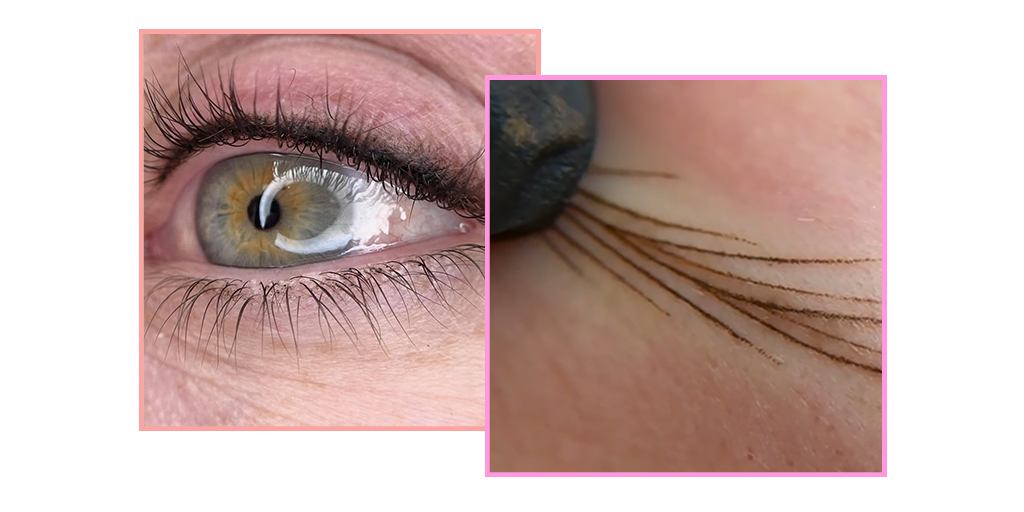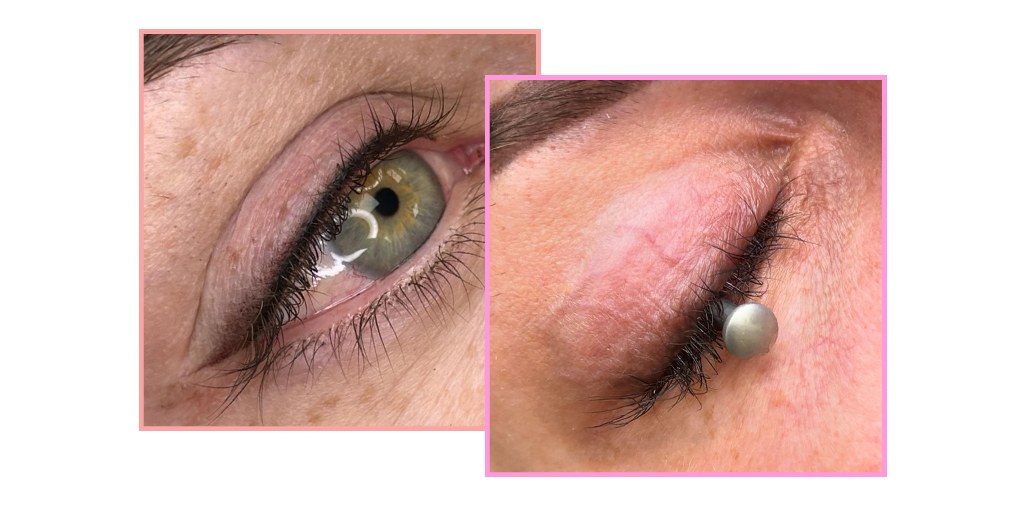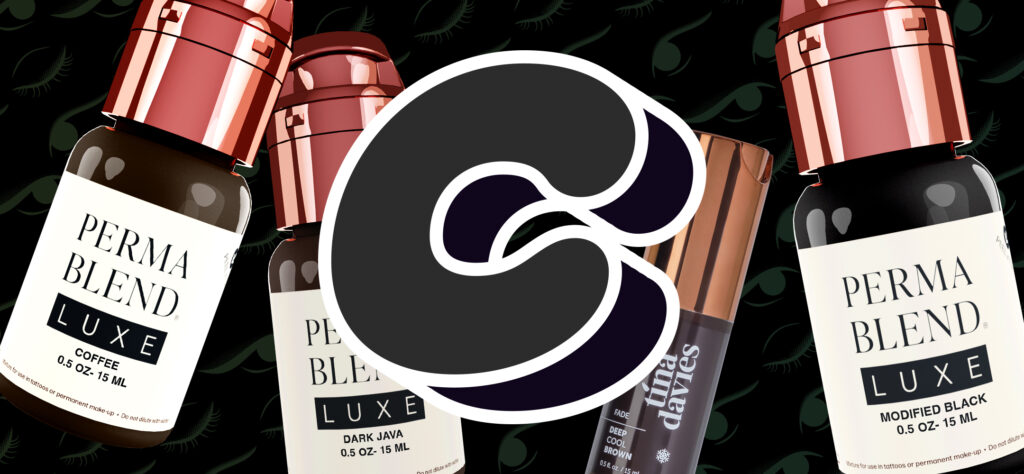What Is Carbon Black?
Investing in your education on pigments as a permanent makeup artist is so important. You should take time to understand how PMU pigments are formulated, the role each ingredient plays, whether they’re organic or inorganic and how they’ll react with a client’s skin depending on their skin tone and type.
One ingredient it’s important to be aware of is Carbon Black (CI 77266). This is a similar ingredient to Titanium Dioxide in that it’s known for providing longevity in pigments.
We’ve created this blog to help you understand more about Carbon Black and what to consider when using pigments that contain this powerhouse ingredient!

What Role Does Carbon Black Play In Pigments?
Carbon Black (CI 77266) is often used alongside Titanium Dioxide in permanent makeup pigment formulations. It has the smallest particle size out of all organic and inorganic pigments. As such, it behaves in the same way an organic pigment would, despite actually being an inorganic pigment.
Organic pigments are more transparent and reflect more light as well as containing smaller particles. They are more long-lasting and provide a vibrant look. They’re also quicker to implant so require less passes to get the required saturation.
Inorganic pigments have a bigger particle size, whilst also reflecting less light and being more opaque. They’re more muted and earthy and generally require more passes to achieve the required saturation in the skin. They also don’t have as much longevity so more frequent top ups might be needed.
With carbon black behaving as an organic pigment, it can increase the overall longevity of a colour and provide more vibrancy in a healed PMU treatment.
What Products Include Carbon Black?
There are several brands that contain carbon black within their PMU pigments, including:
- Perma Blend LUXE PMU Ink Onyx - This ultra-dark pigment is perfect for creating striking, long-lasting eyeliner designs. Its rich carbon black formula ensures a bold, crisp look, making it a favourite for permanent eyeliner procedures.
- Perma Blend LUXE PMU Ink Black Umber - A deep, dark pigment that offers a softer alternative to pure black, Black Umber is ideal for clients seeking a subtler eyeliner. Its smooth application and blend of carbon black make it a versatile choice for various eyeliner styles.
- Perma Blend LUXE PMU Ink Modified Black - Modified Black is formulated with carbon black to offer an intense, dark finish, making it ideal for eyeliner work. Its slightly warmer undertone helps prevent cool fading over time, ensuring a long-lasting, true-to-colour result.
- Tina Davies Fade Eyebrow Pigment Collection - This set offers a range of pigments designed for creating natural-looking eyebrows. Each pigment in the collection is carefully balanced to ensure beautiful, long-lasting results, with carbon black providing depth and dimension.
- Tina Davies x Perma Blend Luxe I Love Ink Eyebrow Collection - Developed in collaboration with Tina Davies, this collection features a variety of rich, natural brow shades infused with carbon black for added depth. These pigments are perfect for creating defined, realistic brows with excellent retention and fade resistance.
- Perma Blend LUXE PMU Ink Pucker Up Buttercup Set - Henna V2 & Vintage Maroon
Included in this set of lip pigments is perfect for creating soft, natural lip shades or bold, vibrant hues. Henna V2 offers a warm, earthy tone, while Vintage Maroon provides a classic deep red—both formulated to offer excellent saturation and retention.
- Perma Blend LUXE PMU Ink Stevey G Restore Set - The Stevey G Restore Set contains a variety of scalp micropigmentation pigments designed to mimic natural hair follicles. These pigments, enhanced with carbon black, provide realistic shading and coverage for scalp restoration procedures.
- Perma Blend LUXE PMU Ink Stevey G Reclaim Set - Designed for scalp micropigmentation, the Stevey G Reclaim Set offers highly pigmented, natural-looking colours that ensure excellent retention. Formulated with carbon black, these pigments are perfect for clients looking to restore a natural, full hairline appearance.

Benefits of Carbon Black - Why Is It Needed?
Carbon black is particularly beneficial for creating darker shades used in eyebrow, eyeliner, and scalp micropigmentation treatments. Some key benefits include:
- Longevity / minimal fading. Pigments containing carbon black provide a longer-lasting look after treatment. The colour tends to stay vibrant for longer and less frequent touch ups are required, which is good for clients who prioritise longevity.
- Versatility. Carbon black is used in pigments that can be used in pigments for a lot of different treatments, including eyeliner, eyebrow and scalp micropigmentation (SMP).
- Bold pigmentation. Pigments formulated with carbon black provide an intense and deep rich colour which is ideal for creating bold and defined lines in treatments like eyeliner or SMP.
- High opacity. When using pigments containing Carbon Black, you can get fuller coverage, even on lighter skin tones. It’s also effective for both shading and filling in areas like the brows.
- Smoother application. Less passes are required to get the ideal saturation which can mean there is less trauma to the skin.
However, it's important for PMU artists to use pigments containing carbon black carefully, as overuse or improper application may lead to an overly dark or harsh appearance.
Is Carbon Black Difficult To Remove?
As with Titanium Dioxide, Carbon Black outlasts other pigments in the skin and can leave behind an ashy or grey residual colour over time.
It’s also highly durable and can’t be easily removed with laser or other treatments. So, artists need to be careful about how much they use, particularly in procedures where the client might want changes and removal might be needed in the future.
The Importance Of Experience and Education
To ensure you avoid any unwanted results when using pigments containing carbon black, you should take time to educate yourself on the following:
- Understanding colour theory, such as how different colours react with the skin, certain skin tones and types. Also, how pigments are formulated, the ingredients they contain, and how they’ll fade over time.
- Understanding what your client wants. Some clients want a more vibrant, longer-lasting look whilst other clients prefer a more natural look that’ll require more frequent touch ups, giving them the flexibility to change their look to fit the most current trends. Having an idea of what your client wants can inform the pigments you choose for their treatment.
- Technique. Organic and inorganic pigments will require different techniques to get the best results. For example, less saturation is required for organic pigments as they implant into the skin more easily, whilst more saturation is required when using inorganic pigments as they take more passes to implant into the skin.

So, be sure to invest in PMU education and take time to learn about pigmentology. In doing so, you can provide your clients with the best experience and ensure they get the results they want!
A great resource is the Perma U Science Behind the Ink online course or the PMUni Colourant Manual! Shop now on the Killer Beauty website!








